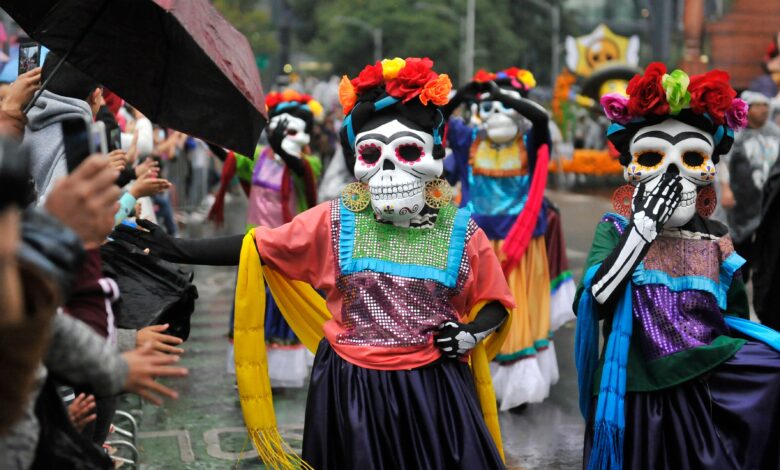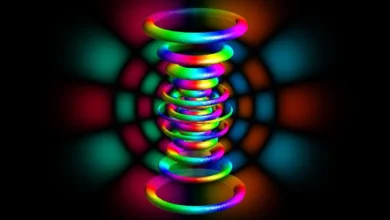
The Mexican Day of the Dead, also known as “Día de Muertos,” is one of the world’s most iconic and vibrant festivals. This annual celebration, deeply rooted in Mexican culture, honors deceased loved ones and celebrates the circle of life. The festival’s colorful traditions, symbols, and rituals have intrigued people globally, making it an internationally recognized event. This article will delve into the top 15 facts about the Mexican Day of the Dead, uncovering the significance behind this captivating and culturally rich occasion.
The Origins of the Mexican Day of the Dead
The Aztecs and other Mesoamerican civilizations, in particular, practiced rites to honor the dead during pre-Columbian times, which is when the Mexican Day of the Dead first appeared. These ancient celebrations often lasted for months, aligning with the harvest season.
Celebrations and Traditions
Building Ofrendas (Altars)
A central aspect of the Day of the Dead is the construction of “ofrendas,” which are altars adorned with offerings to welcome and commemorate departed souls. Ofrendas typically feature photographs of the deceased, their favorite food, drinks, and other items they enjoyed in life.
Calacas and Calaveras (Skeletons and Skulls)
Calacas and calaveras, whimsical skeletons, and skulls play a significant role in the Day of the Dead decorations. Far from being morbid, these lively and often humorous figures symbolize the belief that death is an inevitable part of life.
La Catrina
One of the most iconic symbols associated with the Mexican Day of the Dead is “La Catrina,” an elegantly dressed female skeleton. Created by renowned Mexican artist Jose Guadalupe Posada, La Catrina represents the idea that death unites all individuals, regardless of their social status.
Marigolds and Candles
Marigolds, known as “cempasúchil” in Spanish, are bright orange flowers that decorate ofrendas and gravesites. They are believed to guide spirits back to the living world. Candles are also lit to illuminate the path for the souls of the departed.
Sugar Skulls
Sugar skulls are intricately decorated candies made from sugar and adorned with colorful icing. These delightful treats are often personalized with the names of loved ones and placed on ofrendas as offerings.
Read More: How Can Artificial Intelligence Consultants Help Your Business In 2023
Pan de Muerto (Bread of the Dead)
Pan de Muerto, a sweet and flavorful bread, is an essential culinary delight during the festival. Its round shape represents the life cycle and is often adorned with bone-shaped decorations on top.
Family Gatherings and Cemetery Visits
The Day of the Dead brings families together, encouraging them to visit cemeteries to clean and decorate gravesites. Families spend time reminiscing about their departed loved ones, fostering a connection between the living and the dead.
The Symbolism Behind the Day of the Dead
Honoring Ancestors and the Circle of Life
The Mexican Day of the Dead is a deeply spiritual occasion that honors ancestors and recognizes death as a natural part of the human experience.Through recollections and tales that are passed down from one generation to the next, it celebrates the continuation of life.
Acceptance of Death as Part of Life
Unlike the Western perspective on death, the Day of the Dead embraces the idea that death is not an end but a continuation of the journey. It emphasizes the celebration of life rather than the mourning of death.
Blending Indigenous and Catholic Traditions
The festival is a unique blend of indigenous Mesoamerican beliefs and Catholic customs. It reflects the harmonious coexistence of these two cultures, which has been a hallmark of Mexican identity for centuries.
The Role of Mesoamerican Beliefs
Mesoamerican cultures, such as the Aztecs, believed that the spirits of the deceased returned to the living world during specific times of the year. The Day of the Dead embodies this belief and maintains its significance in Mexican culture.
The Mexican Day of the Dead Around the World
The appeal of the Mexican Day of the Dead extends beyond Mexico’s borders. In recent years, the festival’s popularity has spread globally, with various communities hosting their celebrations and incorporating elements of the Mexican tradition into their observances.
Misconceptions and Common Myths
Despite its growing recognition, the Day of the Dead must often be understood. It is essential to address some misconceptions to appreciate the festival’s true cultural and spiritual significance.
Mexican Halloween
Contrary to popular belief, the Day of the Dead is not a Mexican version of Halloween. While both events occur around the same time of year, they have distinct origins, symbolism, and practices.
Glorifying Death
Some mistakenly view the festive and colorful celebrations as glorifying death. The festival truly seeks to honor and remember deceased loved ones with joy and reverence.
Mocking the Dead
The playful representation of skeletons and skulls may be misinterpreted as mockery. However, these symbols depict the joyful afterlife and the unity between the living and the dead.
Day of the Dead vs. Halloween: Differences and Similarities
Although the Day of the Dead and Halloween share the theme of death, they are fundamentally different in their origins, cultural contexts, and customs. Understanding these distinctions can deepen one’s appreciation for both festivals.
The Global Appeal of the Mexican Day of the Dead
The universal themes of remembrance, acceptance, and celebration of life make the Day of the Dead a celebration that resonates with people from various cultural backgrounds worldwide.
Day of the Dead in Modern Pop Culture
Movies and Television
The Day of the Dead has inspired numerous movies and television shows that have introduced its traditions to a global audience.
Art and Fashion
Artists and designers worldwide draw inspiration from the festival’s colorful and captivating imagery, incorporating Day of the Dead elements into their works and fashion collections.
Festivals and Events
Various countries host Day of the Dead festivals, attracting tourists and enthusiasts eager to experience the vibrant celebrations firsthand.
Day of the Dead Crafts and Activities
Engaging in Day of the Dead crafts and activities allows individuals to participate actively in the celebration and create personalized tributes to their loved ones.
Making Sugar Skulls
Creating sugar skulls is a popular activity during the festival. Families and friends gather to decorate these sweet treats with colorful icing.
Creating Ofrendas at Home
Many construct their ofrendas at home, allowing for personalization and a deeper connection to the tradition.
Face Painting and Costumes
Face painting in the style of sugar skulls and wearing festive costumes is a fun way to immerse oneself in the spirit of the Day of the Dead.
Day of the Dead and Tourism in Mexico
The festival’s increasing global appeal has significantly impacted tourism in Mexico, particularly in regions known for their elaborate Day of the Dead celebrations.
Oaxaca and Its Celebrations
Oaxaca is renowned for its elaborate and traditional Day of the Dead festivities, attracting tourists worldwide.
Mexico City’s Grand Parade
Mexico City hosts a spectacular grand parade, where floats and participants don vibrant costumes to honor the dead.
Riviera Maya’s Unique Twist
The Riviera Maya region adds its unique touch to the festival, blending the traditions of the Yucatec Maya with those of the Day of the Dead.
Day of the Dead: Preserving Tradition in a Changing World
As the world evolves, preserving the authenticity and significance of the Mexican Day of the Dead is crucial to safeguarding its traditions and cultural heritage.
The Commercialization Debate
With the rising popularity of the festival, there have been concerns about its commercialization and potential loss of its original meaning.To preserve the character of the festival, tradition and modernity must coexist in harmony.
Honoring the Day of the Dead Respectfully
For those who wish to participate in the celebration, it is vital to do so respectfully, honoring the cultural and spiritual significance of the festival.
Conclusion
The Mexican Day of the Dead is a magical and heartfelt celebration that honors departed loved ones while embracing the beauty and mystery of life and death. This festival’s vibrant traditions and rich symbolism have captivated people’s hearts worldwide. By preserving its authenticity and celebrating it with reverence, we can continue to cherish and share the timeless traditions of the Mexican Day of the Dead for generations to come.
FAQs
Is the Mexican Day of the Dead a somber event?
No, the Day of the Dead is a joyful and celebratory occasion commemorating the lives of deceased loved ones with colorful festivities.
Is the Mexican Day of the Dead only celebrated in Mexico?
While it originated in Mexico, the festival has gained popularity globally, with communities worldwide embracing its traditions.
How do Mexicans prepare for the Day of the Dead?
Mexicans prepare for the Day of the Dead by building ofrendas, decorating gravesites, and participating in various festive activities.
Is the Mexican Day of the Dead related to the Aztec culture?
The Aztecs and other Mesoamerican civilizations practiced comparable rites during pre-Columbian times, which is when the festival’s beginnings may be found.
What is the significance of La Catrina during the Day of the Dead?
La Catrina, an elegantly dressed female skeleton, symbolizes the universality of death and serves as a reminder that we are all equal in the face of mortality.











